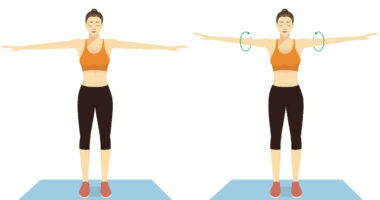In the battle against dementia, many people seek effective and accessible ways to protect their brain health. Among the various interventions, walking stands out as a simple yet powerful activity that can influence cognition, memory, and overall neurological well-being. Experts across neuroscience, gerontology, and physical therapy agree that regular walking isn’t just good for the heart — it’s a potent ally in preserving brain function and counteracting cognitive decline. This article unpacks the compelling reasons why walking matters for dementia, offering insight from specialists and practical guidance to help you or your loved ones “walk your way to a healthier brain.”

Benefits of Walking for Dementia: What Experts Say
Physical activity is essential to maintaining brain health as we age. Lakelyn Eichenberger, PhD, a gerontologist and caregiving advocate at Home Instead, highlights walking’s role in dementia prevention and management. According to Dr. Eichenberger, consistent walking improves blood flow to the brain, which nourishes neurons and supports neural connections critical for memory formation and retention. The increased circulation also helps eliminate toxins and reinforces the brain’s ability to repair itself, slowing the progression of cognitive decline.
Milica McDowell, PT, DPT, a certified exercise physiologist and vice president of operations at Gait Happens, adds that walking enhances physical function, balance, and cardiovascular health—factors that are closely interlinked with optimal brain performance. Walking activates multiple regions of the brain simultaneously, such as the hippocampus (which governs memory), the prefrontal cortex (responsible for decision-making), and the cerebellum (which manages coordination). This complex neural engagement encourages brain plasticity, meaning the brain’s capacity to rewire and improve even in later life.
How Walking Supports Cognitive Function: The Science Behind Every Step
When you take a step, your body initiates a cascade of physiological responses that benefit your brain beyond simple movement. Oxygen intake increases, which fuels neurons and stimulates the release of growth factors like BDNF (Brain-Derived Neurotrophic Factor). BDNF acts as a fertilizer for brain cells, fostering their growth and enhancing synaptic connections essential for learning and memory.
Walking also modulates inflammation and oxidative stress, both of which have been identified as culprits in neurodegenerative conditions such as Alzheimer’s disease. Studies reveal that individuals who engage in moderate-intensity walking for at least 150 minutes per week show slower rates of memory decline and better performance on cognitive tests.
Moreover, the rhythmic pace of walking creates a meditative state that reduces stress hormones like cortisol, which can impair cognitive function when chronically elevated. Regular walkers often report improved mood and sleep quality, both important factors in maintaining mental acuity.
Does Walking Backwards Help with Dementia? Insights from Specialists
Walking backward is an intriguing variation that some experts suggest may offer additional cognitive benefits. Because this movement pattern requires more focus, balance, and coordination, it activates parts of the brain less engaged during forward walking. Dr. McDowell points out that backward walking challenges the brain’s motor and sensory systems, potentially strengthening neural networks related to spatial memory and proprioception.
While research on walking backwards as a dementia intervention is limited, preliminary evidence indicates that this practice can improve gait stability and cognitive processing speed among older adults. This dual physical and mental engagement may complement traditional walking routines by providing extra stimulation to the brain’s executive functions.
However, due to its higher risk of falling, backward walking should be introduced cautiously and always in a safe, controlled environment, especially for those already experiencing mobility issues or balance impairments.
Walk Your Way to a Healthier Brain: Tips to Get Started
Starting a walking routine, particularly for those at risk of or experiencing early dementia symptoms, requires thoughtful preparation to maximize benefits and minimize risks. Here are expert-backed tips to help you begin:
- Set realistic goals: Begin with short sessions, such as 10-15 minutes daily, gradually increasing duration to at least 30 minutes per day.
- Choose safe walking environments: Opt for flat, well-lit paths free from obstacles to reduce fall risk.
- Incorporate variety: Mix steady forward walking with occasional backward walking or side-stepping to stimulate different neural circuits.
- Use walking aids if needed: Canes or walkers can enhance safety and confidence.
- Stay consistent: Regularity is key. Aim for at least 5 days per week.
- Buddy up: Walking with a friend or group increases motivation and provides social engagement, which independently supports brain health.
- Monitor your response: Pay attention to fatigue, pain, or imbalance and consult healthcare professionals as needed.
- Complement walking with cognitive challenges: Listening to audiobooks, practicing mindfulness, or recalling memories as you walk can create additional brain stimulation.
Integrating walking into your daily routine lays a foundation for sustainable brain health. It’s an activity grounded in accessibility, minimal cost, and scalability, making it a practical choice for diverse populations — from caregivers seeking interventions to seniors aiming to maintain independence.
Walking as a Cornerstone for Brain Vitality in Dementia
Walking stands as a scientifically supported and beautifully simple method to assist in preserving brain health and memory as we age. The insights shared by experts like Lakelyn Eichenberger and Milica McDowell illustrate how every step fosters neural growth, supports cognitive function, and helps manage symptoms associated with dementia. Whether it’s the steady forward stride or the more challenging backward pace, walking invites beneficial physiological and neurological changes that aging brains need.
For families and individuals facing the challenges of dementia, embracing walking can transform not only physical wellness but also mental resilience. As research continues to affirm the profound impact of physical activity on cognition, walking remains a cornerstone strategy—helping achieve an engaged mind through the power of movement.
By making walking a daily habit and mindful experience, one takes a proactive step toward a brain that stays healthier longer, shining light on the path to improved quality of life despite neurodegenerative risks.
Also Read | Why Goat Milk Is the Best for Bone Health After 50










